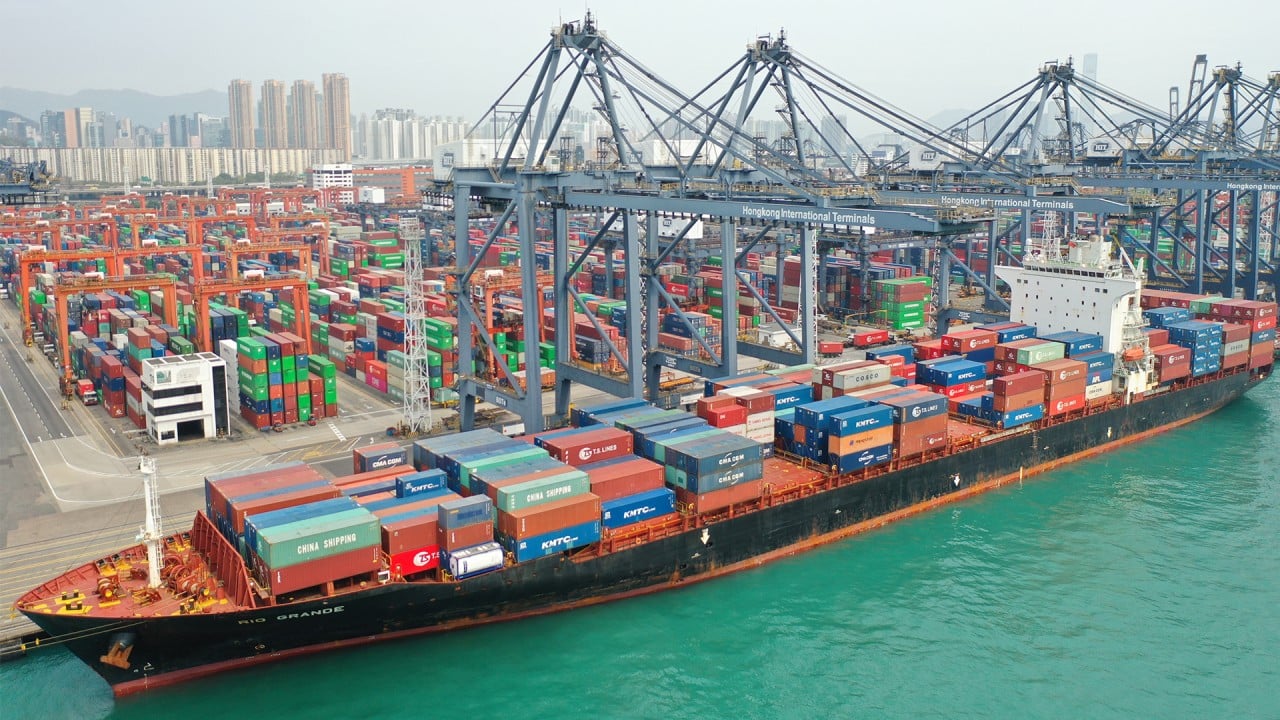
China’s appetite for Australian iron ore, beef and gold push May exports to 4-year high, despite trade tensions
- Australia exported A$39 billion (US$29.3 billion) in merchandise goods last month, of which China bought A$16 billion, or about 41 per cent
- China’s purchases of iron ore from Australia rose AU$2 billion or 20 per cent over the month, while meat imports increased 28 per cent to A$57 million
Chinese demand for Australian iron ore, gold and agricultural products pushed Australia’s merchandise goods exports in May to a four-year high, new trade data shows.
Australia exported A$39 billion (US$29.3 billion) in merchandise goods last month, of which China bought A$16 billion, or about 41 per cent, according to preliminary data from the Australian Bureau of Statistics (ABS) released on Wednesday.
Despite ongoing political and trade tensions between the two countries, China is by far the leading importer of Australian products, well ahead of No 2 Japan, which bought A$4 billion worth of goods in May.
Imports from the world’s second largest economy helped push Australia’s monthly exports to hit the highest level since 2017, when it was A$26 billion.
China-Australia relations: what’s happened over the past year, and what’s the outlook?
“The increase in metalliferous ores to China was once again driven by iron ore … this is the third consecutive record export month for both iron ore and subsequently metalliferous ores,” the ABS said.
“The increase in meat was driven by several categories, primarily frozen beef, and lamb cuts.”

09:20
Trade ‘only one part of the battle‘ in China-Australia dispute, says legal expert Bryan Mercurio
With steel production barely slowing during the recovery, China’s demand for iron ore has remained on an upwards trajectory. China Iron and Steel Association said this year’s crude steel production between January and May had already outpaced the same period last year by 13.9 per cent.
The value of Australian exports soared as iron ore prices hit a record high of US$230 a tonne in recent months amid strong Chinese demand. While there have been some fluctuations, prices remained elevated at about US$213 a tonne this week.
The value of frozen beef exports, however, has risen not just because of an increase in volumes shipped, but also rising prices caused by low cattle slaughter and beef production in Australia, where herds are being rebuilt this year, according to Meat & Livestock Australia (MLA), an industry and marketing group.
Ambrose Cheung, commercial manager at Australian beef exporter Bindaree Beef, said while the volume of beef his business has shipped to China had been tracking well, it was the price of beef that has pushed up the value of exports.
As China-Australia ties fray, who is shaping Canberra’s increasingly hawkish policy on Beijing?
“Record cattle prices have forced a lot of factories to reduce production causing a shortage of meat domestically in Australia and pushing prices to stay up strong,” Cheung said.
Bindaree has not been affected by the bans and has experienced relatively stable sales to China, despite the tough political and trading conditions, which it attributed to customers loyal to the brand and Australian beef.
According to the MLA, total volume of frozen and chilled beef sold to mainland China rose 27 per cent over the month of May, compared to April, but was still 43 per cent lower than in May last year.
Australian lamb and mutton exports volumes to mainland China also rose 22 per cent over the month of May.

09:18
Will iron ore be dragged into the ongoing China-Australia trade conflict?
China’s imports of Australian non-monetary gold also drove the strong trade numbers.
The ABS said despite a small drop in May exports, which were valued at A$457 million, it was the third consecutive month Australia had exported non-monetary gold to China, the first shipments since December 2019.
Gold demand has surged in China as demand for jewellery, bars and coins recovered after a lull caused by the coronavirus outbreak.
China, the world’s largest gold producer and consumer, gave the green light in April for 150 tonnes of gold to be imported mainly from Australia, South Africa and Switzerland.

